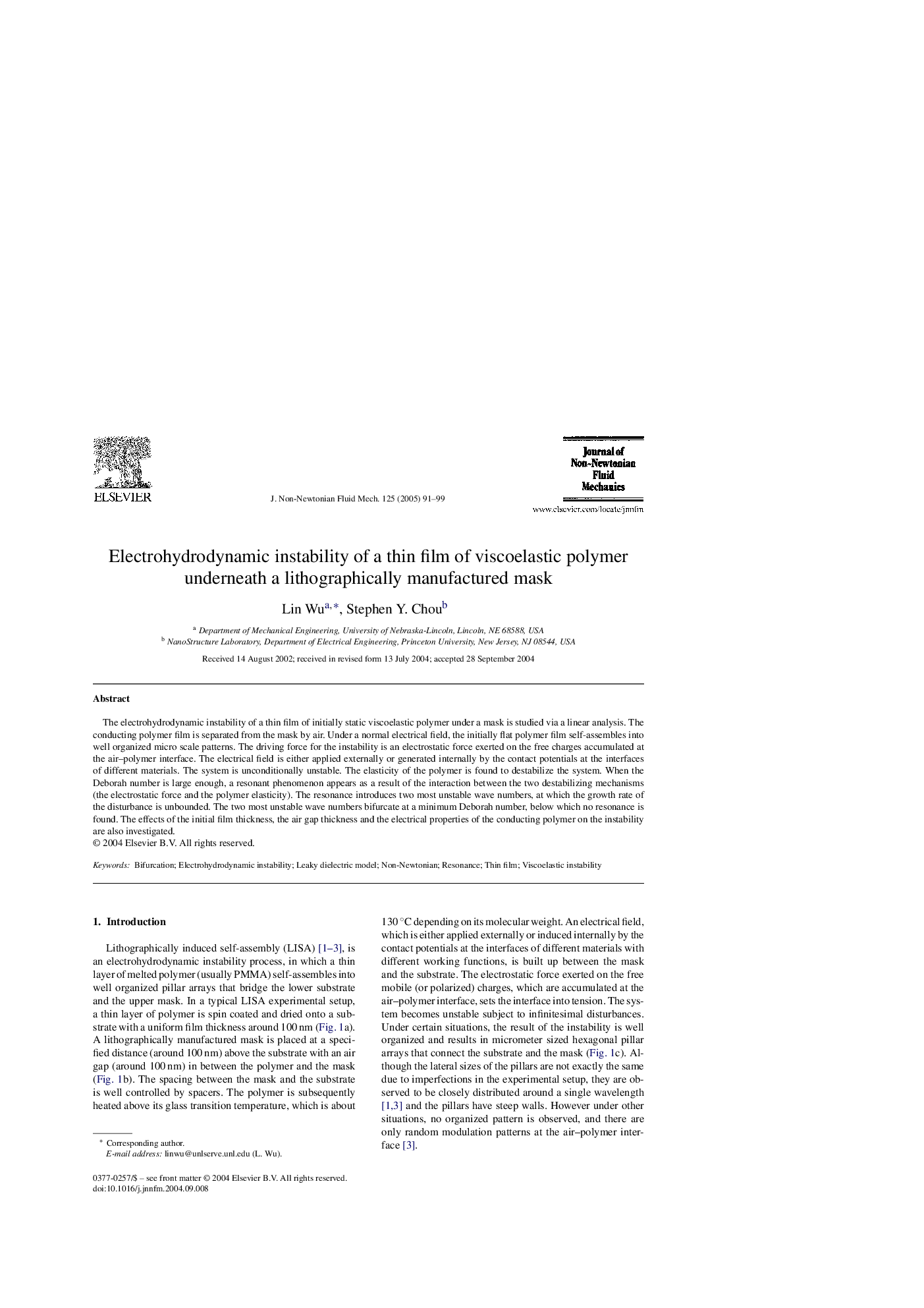| Article ID | Journal | Published Year | Pages | File Type |
|---|---|---|---|---|
| 9693459 | Journal of Non-Newtonian Fluid Mechanics | 2005 | 9 Pages |
Abstract
The electrohydrodynamic instability of a thin film of initially static viscoelastic polymer under a mask is studied via a linear analysis. The conducting polymer film is separated from the mask by air. Under a normal electrical field, the initially flat polymer film self-assembles into well organized micro scale patterns. The driving force for the instability is an electrostatic force exerted on the free charges accumulated at the air-polymer interface. The electrical field is either applied externally or generated internally by the contact potentials at the interfaces of different materials. The system is unconditionally unstable. The elasticity of the polymer is found to destabilize the system. When the Deborah number is large enough, a resonant phenomenon appears as a result of the interaction between the two destabilizing mechanisms (the electrostatic force and the polymer elasticity). The resonance introduces two most unstable wave numbers, at which the growth rate of the disturbance is unbounded. The two most unstable wave numbers bifurcate at a minimum Deborah number, below which no resonance is found. The effects of the initial film thickness, the air gap thickness and the electrical properties of the conducting polymer on the instability are also investigated.
Keywords
Related Topics
Physical Sciences and Engineering
Chemical Engineering
Fluid Flow and Transfer Processes
Authors
Lin Wu, Stephen Y. Chou,
